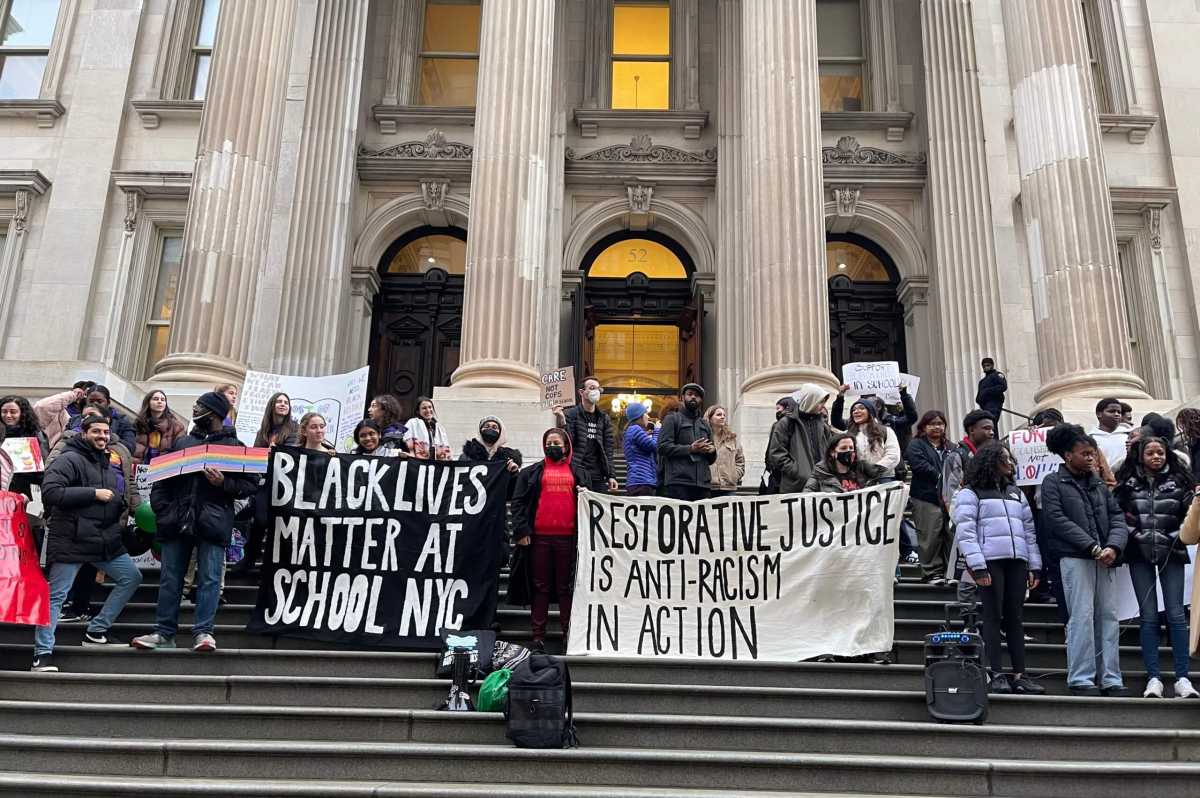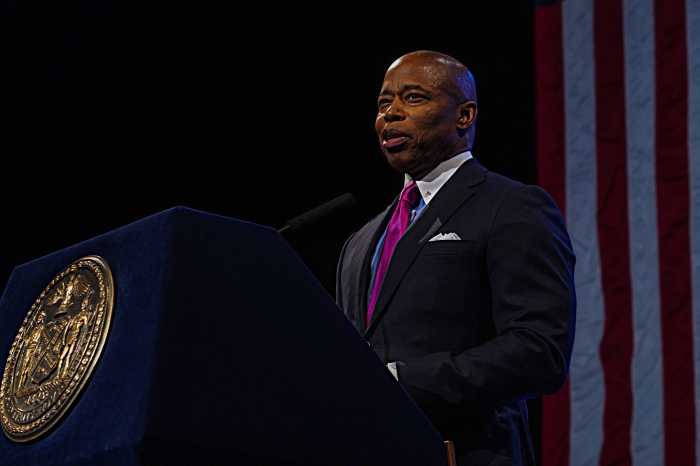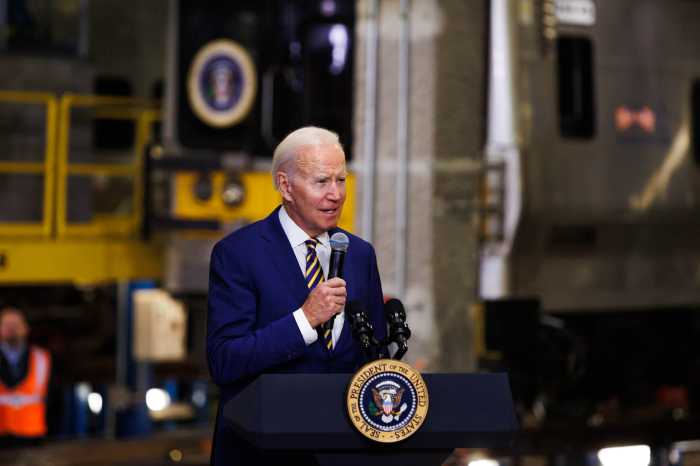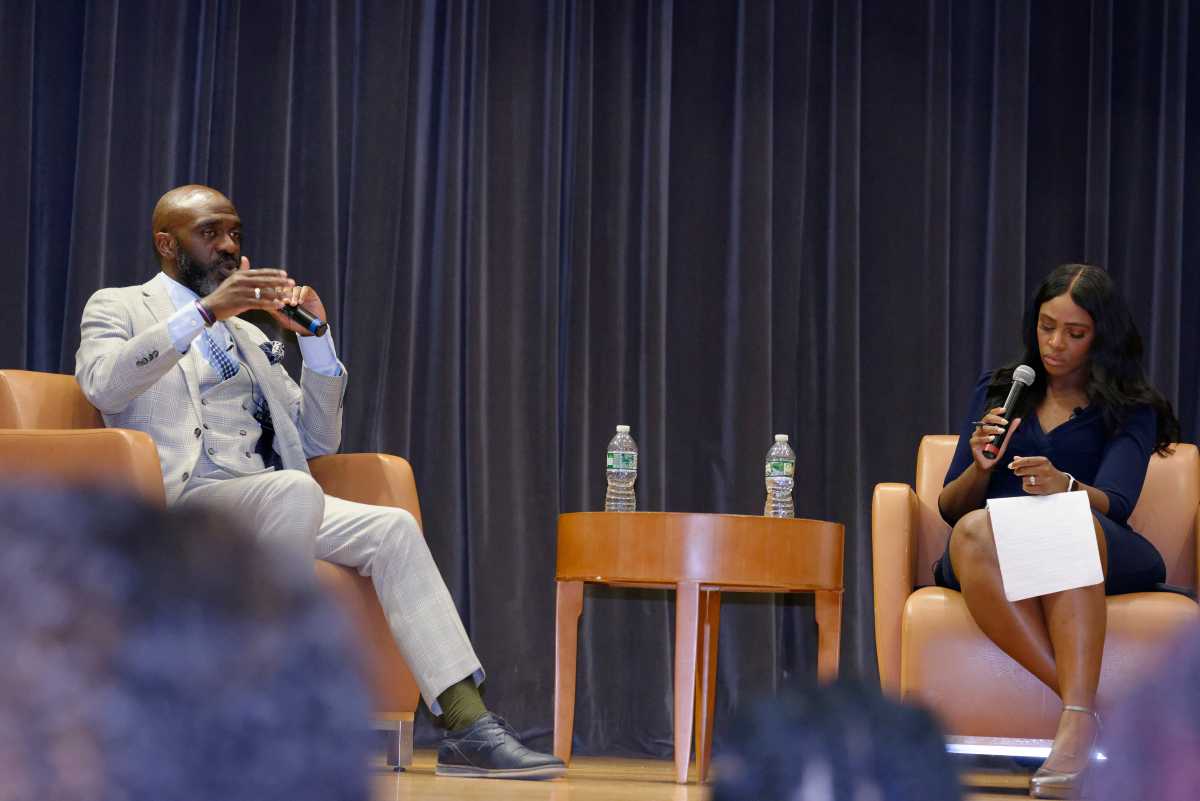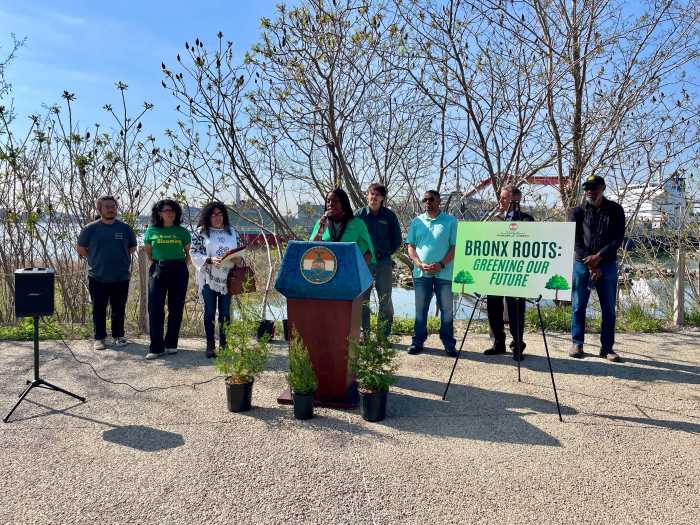Students, parents, and educators held a rally last week for the city’s Black students on the steps of the NYC Department of Education’s headquarters.
The rally, which took place Feb. 9, was organized by the Black Lives Matter at School, an advocacy group inspired by the Black Lives Matter movement, and was part of a weeklong, nationwide movement to call attention to the group’s demands for schools.
About 50 people showed up at the rally and the attendees had four main demands: ending zero tolerance and discipline policies, mandating Black history and ethnic studies in K-12 curriculum, hiring more Black teachers, and funding for more counselors rather than police.
The Black Lives Matter at School organization was formed in 2016 when thousands of teachers, students, and parents showed up at public schools in Seattle donning Black Lives Matter shirts. Though separate from the original Black Lives Matter group, the Black Lives Matter at School organization has now established itself into different chapters across numerous cities, including Boston, Los Angeles, Milwaukee, Philadelphia, New York City, and Washington D.C.
Kaliris Salas-Ramirez, a founding steering committee member of the NYC chapter, said after the rally last week that the group was formed to draw attention to issues pertaining to Black students at schools.
“They just wanted to have a day where children were acknowledged and Black lives were acknowledged,” Salas-Ramirez said. “The following year, the rest of the country followed: Philly, New York. And instead of having it be a day, it ended up being a week of action.”
Salas-Ramirez, a parent of two New York City public school students, joined the Black Lives Matter at School steering committee when the New York City chapter was founded six years ago. Salas-Ramirez is a medical lecturer at the CUNY School of Medicine and the Manhattan Borough President Appointee for the DOE’s Panel for Educational Policy. The New York City chapter has partnered with around 150 schools to participate in the week of action, Salas-Ramirez said.
“It’s really important for us to be age appropriate, developmentally appropriate, but also supportive of children and families,” Salas-Ramirez said. “So many times when we’re talking about the history of black people in this country, we talk about slavery, and we talk about the trauma. But for us, it’s very much about celebrating all the wonderful things that Black women, Black villages, and families have given us as a society and how much we’ve moved forward.”
As the rally’s emcee, Tajh Sutton, a steering committee member and president of District 14’s Community Education Council, said she was excited to be part of the day’s action to catch the attention of the Department of Education. Sutton, who herself is a product of NYC public schools, said her primary goal that day was to demystify the Black Lives Matter movement in schools.
“There’s an unfortunate correlation to Black Lives Matter at School with a lot of negative things and a lot of things that strike fear in the heart of parents,” Sutton said. “But when you look at the values, the demand, and the principles, they benefit and create more safety and justice for every child, every family, every community.”
Jonathan Rampagoa, a Bard student who identifies as Filipino American, showed up at last Thursday’s rally in support of his Black peers. Rampagoa said his participation in organizing for Asians for Black Lives actions during the George Floyd protests stemmed from recognizing some of the academic, social, and institutional intersections that Asian Americans and Black students share in the U.S.
“As Asian Americans, we can stand in solidarity because a lot of our history is taught in the lens of the American scope where it’s negative,” Rampagoa said. “For Black Lives, it’s about slavery, segregation. It’s about apartheid. It’s never about the accomplishments or even the contributions of Black revolutionaries.”
Events during the week of action included education on the group’s 13 principles, book clubs, sessions on Historically Black Colleges and Universities, and early childhood forums discussing race.
The first of its 13 guiding principles is restorative justice to “intentionally build and nurture a beloved community.”
Restorative justice has been a hot-button issue in New York City’s schools in recent years. The city’s education department had planned to triple its funding and allocate $21.6 million towards restorative justice programs in schools for the 2023 fiscal year, an amount which could potentially be cut. More than 60 organizations, including the Black Lives Matter at School, expressed concern about proposed cuts to the restorative justice programs in a letter sent to Mayor Eric Adams last August.
In the letter, it read: “The City has not accounted for the $20 million, including $12 million from federal COVID relief funding, allocated to restorative justice practices for FY 22. Furthermore, we understand that existing restorative justice initiatives and expansion to all middle and high schools through allocated federal funding of $14.8M for FY 23 and FY 24 are at risk.”
The United Federation of Teacher’s MORE caucus, which advocates for social justice, has been involved with the Black Lives Matter at School movement for the past six years. Rosy Clark, a MORE caucus member and pre-K teacher for the DOE, said her use of the Black Lives Matter at School in her curriculum has been faced by fierce opposition from parents at the public school she teaches.
“We want to make sure that any teacher that wants to participate in this work is protected,” Clark said. “It is a completely valid and powerful tool to use in the classroom.”
Sutton said it’s important to ask questions about how to make public education in New York City worth receiving for more Black students.
“If we have the resources, the social workers, and the cultural competence that we need, I think that will go a long way to making students feel safe at school,” Sutton said. “I think young people just speaking their truth laid out the need.”

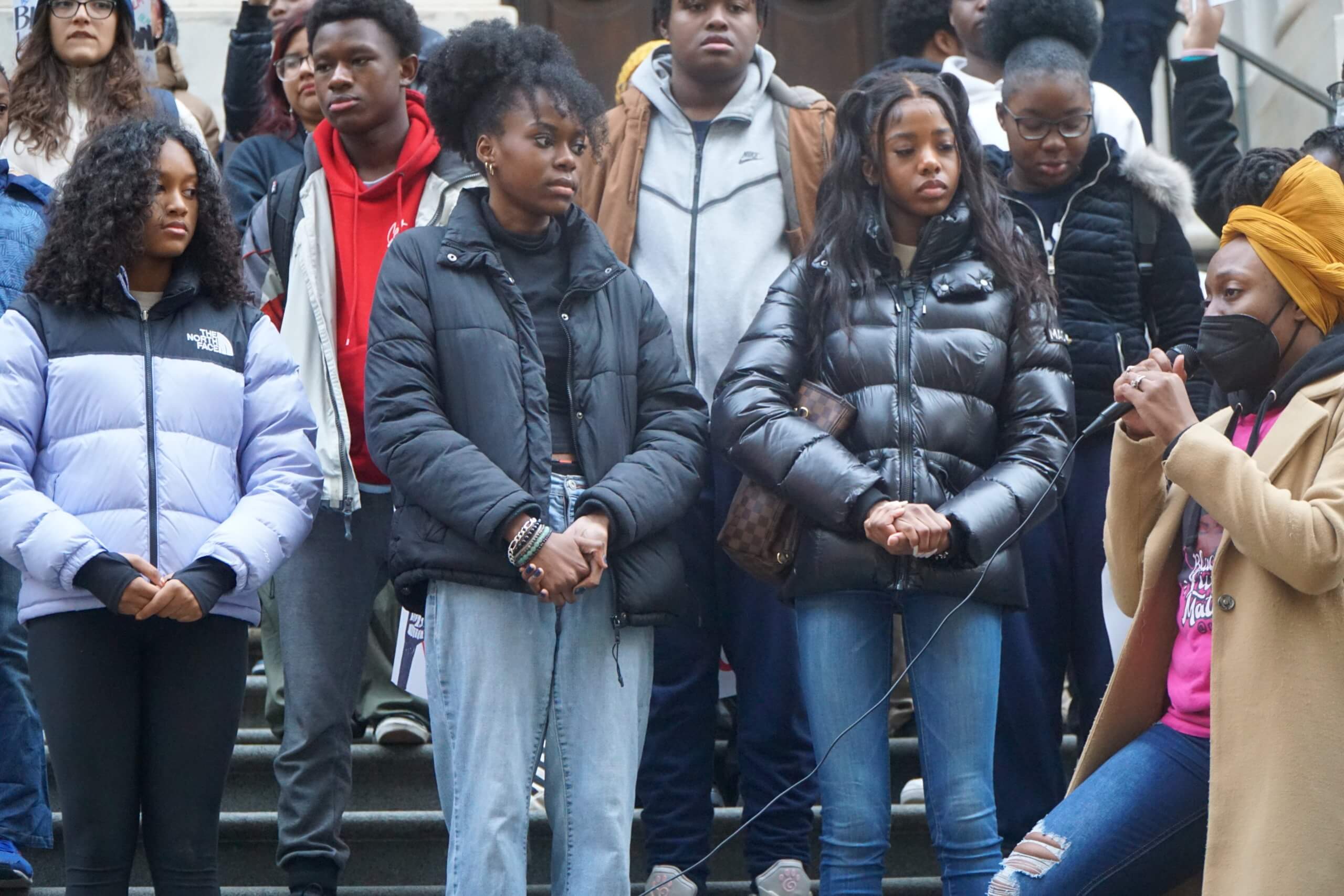
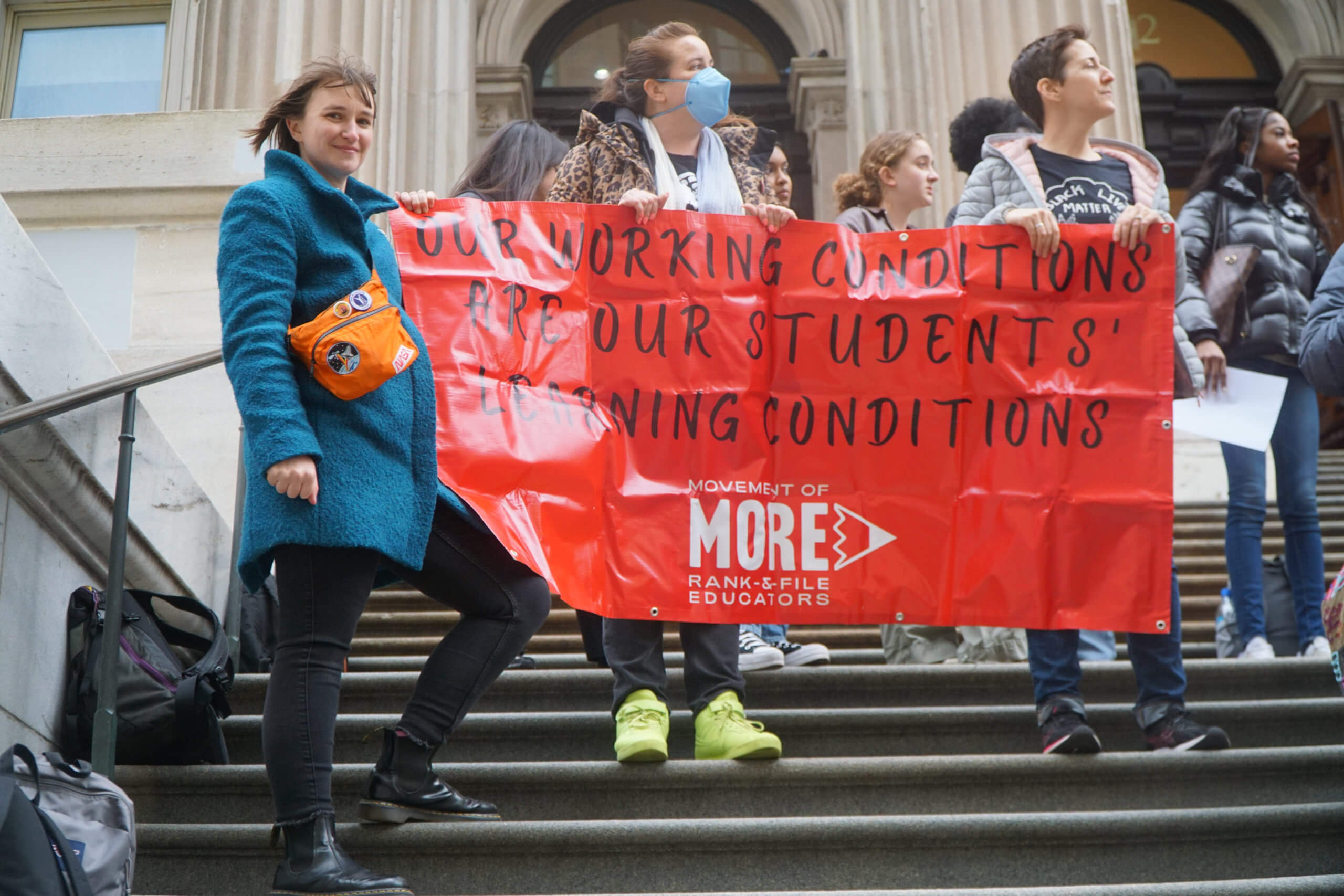
Read more: Police Bust Illegal Migrant Market on Randall’s Island



